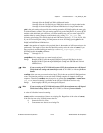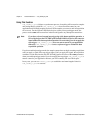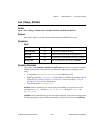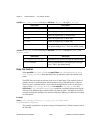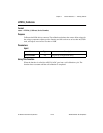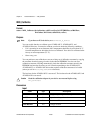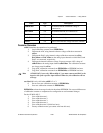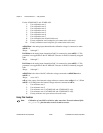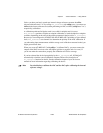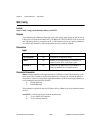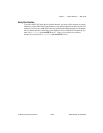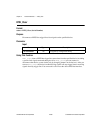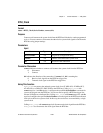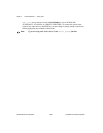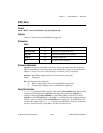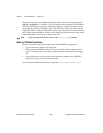
Chapter 2 Function Reference — MIO_Calibrate
©
National Instruments Corporation 2-283 NI-DAQ FRM for PC Compatibles
Unless you have previously stored new internal voltage reference constants in refLoc
(the user reference area) 1 or 2 by calling
MIO_Calibrate with calOp set to 4, you must use
refLoc 6 (the factory reference area) when performing an ADC or a DAC (calOp set to 2 or 3,
respectively) calibration.
A calibration performed in bipolar mode is not valid for unipolar and vice versa.
MIO_Calibrate performs a bipolar or unipolar calibration, or loads the bipolar or unipolar
constants, depending on the value of the polarity parameter in the last call to
AI_Configure.
Because you can configure the AT-MIO-16X and AT-MIO-64F-5 polarities on a per-channel
basis,
MIO_Calibrate uses channel 0 to determine the polarity of the ADC calibration. If
you take analog input measurements with the wrong set of calibration constants loaded, you
might get erroneous data.
When you use an AT-MIO-16F-5 with calOp = 3 (calibrate DACs), you must connect the
outputs of the DAC in reverse to the A/D inputs (positive to negative and vice versa). If
you do not make the connections properly, the calibration will fail to converge.
If you have altered the device input polarity by the
AI_Configure call, NI-DAQ will
automatically reload the correct calibration constants. Refer to the description of
AI_Configure function for details. See the calibration chapter of your device user
manual for more information regarding calibrating the device.
Note You should always calibrate the ADC and the DACs after calibrating the internal
reference voltage.



